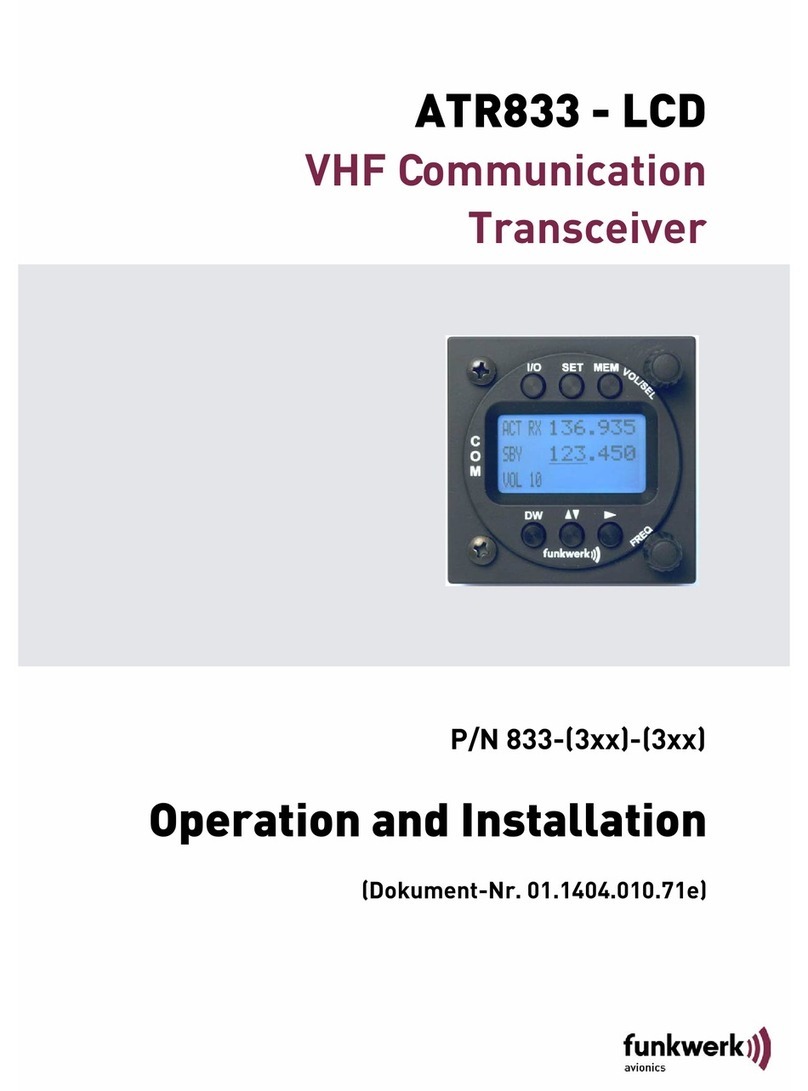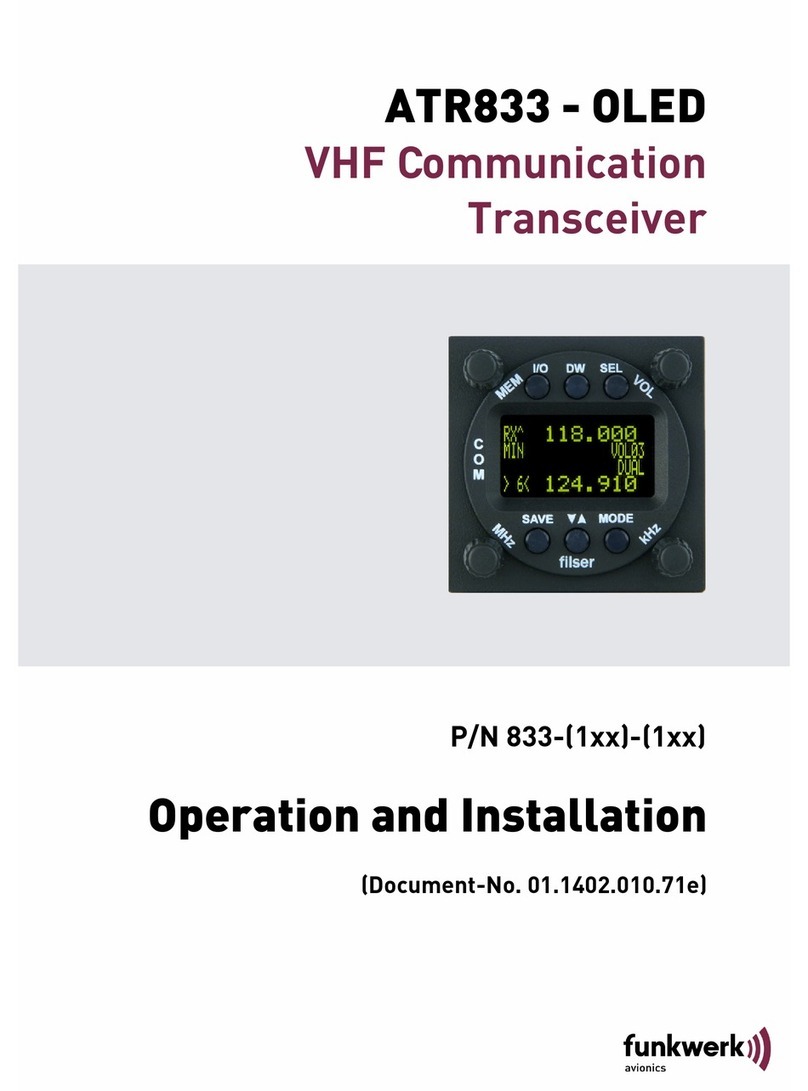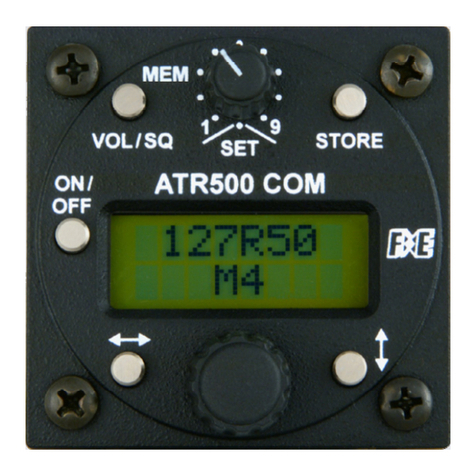ATR833A / P/N 833A-(1xx)-(1xx)
Operation and Installation
3Dokument-Nr.: 01.1411.010.71e / Revision: 2.00
CONTENTS
1GENERAL........................................................................................................... 5
1.1 Symbols ................................................................................................... 5
1.2 Abbreviations ........................................................................................... 5
1.3 Customer Support.................................................................................... 6
1.4 Features................................................................................................... 6
2OPERATION ....................................................................................................... 7
2.1 Controls ................................................................................................... 7
2.2 ON/OFF ................................................................................................... 9
2.3 Display ..................................................................................................... 9
2.4 Basic Settings ........................................................................................ 11
2.4.1 VOL - Volume............................................................................ 12
2.4.2 SQL - Squelch ........................................................................... 12
2.4.3 DIM – Display Brightness .......................................................... 13
2.4.4 VOX - Voice Activation Speech Level for the Intercom ............. 13
2.4.5 DWM - Dual Watch Mute........................................................... 14
2.4.6 INT - Intercom-Volume .............................................................. 14
2.4.7 EXT - Volume of the External Audio Input ................................. 15
2.5 Frequency Setting.................................................................................. 16
2.5.1 8.33 / 25 kHz Channel Width Selection ..................................... 16
2.5.2 Manual Frequency Input............................................................ 16
2.5.3 Recall a Frequency from the User Memory............................... 17
2.5.4 Recall a Frequency from the List of the 10 Last Used............... 18
2.5.5 Store a Frequency into the User Memory.................................. 18
2.6 Dual Watch Operation............................................................................ 20
2.7 Transmission ......................................................................................... 22
2.8 Reception............................................................................................... 22
3CONFIGURATION ............................................................................................ 23
3.1 SPC - Channel Spacing......................................................................... 23
3.2 Energy Saving Mode – Automatic Display Darkening............................ 24
3.3 PTT-Button Selection............................................................................. 25
3.4 EXT – External Audio Input’s Behavior.................................................. 26
3.5 Microphone Input Sensitivity (MLS/MLD/MRS/MRD)............................. 27
3.5.1 MLS – Left Standard microphone Input Sensitivity.................... 27
3.5.2 MLD – Left Dynamic Microphone Input Sensitivity .................... 27
3.5.3 MRS – Right Standard Microphone Input Sensitivity................. 27
3.5.4 MRD – Right Dynamic Microphone Input Sensitivity ................. 27
3.6 TST - Test Mode.................................................................................... 28
3.7 Master Reset ......................................................................................... 28






























